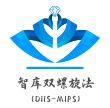"Ten Key Issues" of Think Tank Double Helix Methodology
Document Type
Research-Article
Journal Name
Institutes of Science and Development, Chinese Academy of Sciences, Beijing 100190, China School of Public Policy and Management, University of Chinese Academy of Sciences, Beijing 100049, China
Institutes of Science and Development, Chinese Academy of Sciences, Beijing 100190, China
Institutes of Science and Development, Chinese Academy of Sciences, Beijing 100190, China
Keywords
think tank, think tank, double helix methodology, ten key issues, data-information-intelligence-solution (DIIS), mechanismimpact-policy-solution (MIPS)
Abstract
With the deepening of think tank construction, the importance of think tank research has become increasingly prominent. Think tank double helix methodology focuses on solving the problem of "how to do" think tank research, provides a systematic cognitive perspective for think tank research. Starting from the origin of think tank research, this study proposes the "ten key issues" of the think tank double helix methodology. The first key issue is "the decomposition and analysis of think tank problem". This issue is the critical starting point for think tank problem research. The think tank problem is simplified and decomposed into the single-dimensional sub-problem set, and the structured cognitive framework is established, which is linked to the existing knowledge system. The second key issue is "the scenario analysis driven by think tank problem". The various scenarios of the think tank problem that may occur in the future are considered, and the possibility of these scenarios, their impact and consequences are analyzed to help decision makers make reasonable decisions. The third key issue is " the uncertainty analysis of think tank problem research". Through analyzing the uncertainty in policy-making, the risk degree and scope brought by uncertainty, and the results under different risks, the deviation of think tank problem solution is reduced. The fourth key issue is "the policy simulation analysis of think tank problem research". The convergence of economics, sociology, management, public policy, and other multidisciplinary theoretical knowledge is used to model and calculate think tank problem under the support of computer technology, and the past causes and future impacts of policy are analyzed accordingly. The fifth key issue is " the circulative iteration of think tank research". When there are situations such as incomplete cognitive framework, insufficient expert consensus, and deviations between objective analysis and subjective judgment, a new round research needs to be opened. Such a circulative iteration is a process of deepening understanding, continuous convergence, repeatedly evidence-based, and seeking solutions. The sixth key issue is "the coupling relationship between DIIS and MIPS". The two spirals of data-information-intelligence-solution (DIIS) and mechanism-impact-policy-solution (MIPS) are tightly coupled, interlocked, and mutually affected, achieving convergence from relatively decentralized, open, and cross-domain think tank research to practical solutions. The seventh key issue is "the expert organization and management of think tank research". The selection of experts needs to be closely linked to the think tank problem to achieve a match between experts and problem. With the deepening of research, it is necessary to continuously search for and select suitable experts, and dynamically organize a wider range of experts to participate in research. The eighth key issue is " the human-machine combination think tank research support system". The emergence of artificial intelligence scientists and human-machine combination interaction platform systems provide possibilities for human-machine combination think tank research. This will become the trend and direction of think tanks in the future. The ninth key issue is "the combination of objective analysis and subjective judgment". To maintain the independence of think tanks, it is necessary to combine objective analysis and subjective judgment, avoid decision-making deviations on the basis of fully considering objective facts, and prevent intentional subjective intervention on the basis of fully analyzing the demands of relevant stakeholders. The tenth key issue is "the think tank product quality management". The quality of think tank products represents the core competitiveness of the think tank. Think tank double helix methodology can provide a basis for the quality control of the whole think tank research process. "Ten key issues" is another innovation, deepening, and development of think tank double helix methodology. Solving "ten key issues" will provide more specific method and tool set for think tank double helix methodology, and make think tank research more operational, formalization, and scientific.
引用:PAN Jiaofeng, LU Xiao, LIU Huihui. "Ten Key Issues" of Think Tank Double Helix Methodology. Bulletin of Chinese Academy of Sciences, 2022, 37(2): 141-152
Recommended Citation
PAN Jiaofeng, LU Xiao, LIU Huihui. "Ten Key Issues" of Think Tank Double Helix Methodology. Bulletin of Chinese Academy of Sciences, 2022, 37(2): 141-152

